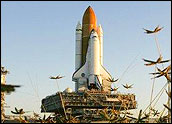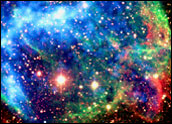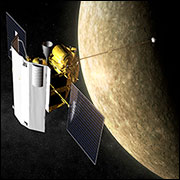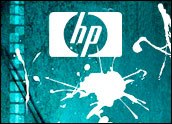
Just shy of 40 successful space journeys, the NASA shuttle Discovery headed to the International Space Station (ISS) Thursday on a final mission that followed repair problems and bad weather.
Known as “STS-133,” Discovery’s last voyage will take 11 days. The shuttle is delivering a variety of parts and modules to the space station and carrying an interesting hitchhiker –a humanoid robot named “Robonaut 2,” or “R2.”
“Discovery’s final flight involves delivery of a last few components to the ISS,” said Stevens Institute of Technology space systems engineering professor Debra Lepore, former lead engineer for the technical panel of the U.S. Congressional Space Launch Modernization Plan.
“The components can house science experiments, help expand laboratory capabilities, and increase storage space,” Lepore told TechNewsWorld. “Think of them like additional rooms added to a modular home.”
With Discovery in retirement, NASA will shutter its entire shuttle program after two more missions are completed.
U.S. Representative Gabrielle Giffords — recovering from gunshot wounds in a Houston rehabilitation clinic — will watch as her husband Mark Kelly joins the shuttle Endeavour crew for its final flight April 19.
The shuttle Atlantis flies June 28.
Rich History
Named after a seagoing vessel piloted by 17th century explorer Henry Hudson, Discovery started her career in 1984, going on to a “rich history in human space flight,” NASA Administrator Charles Bolden blogged in a final tribute.
“It was my honor to fly aboard Discovery on the STS-31 mission in 1990, when she brought the Hubble Space Telescope into orbit. And on STS-60, when Sergei Krikalev, the first Russian to fly on an American spacecraft, was a crew member,” he recalled.
With her uplifting history, Discovery kept the flames of space exploration alive in the wake of the Challenger and Columbia shuttle tragedies, wrote Bolden.
“The Discovery is now the oldest operating shuttle, after the very sad loss of Challenger, Columbia, and their crews,” said human space exploration researcher Stephen Braham, Ph.D., who directs the Simon Fraser University PolyLAB.
“Along with the Hubble telescope, Discovery launched many spacecraft, including the Advanced Communication Test Satellite (ACTS),” Braham told TechNewsWorld. “ACTS defined modern Ka-band communications, and was used by my team in the Arctic in 1999, at the NASA Haughton-Mars Project.”
Discovery, in fact, may be the most successful spacecraft in history. She’s carried more crews safely to and from space than any other ship. Among many firsts: She was first to bring a satellite back to Earth; first to have a female pilot at the helm; first to carry the oldest person into space — 77-year-old John Glenn; first to host an African-American space walker; and first to fly a member of Congress into orbit, Utah Senator Jake Garn.
Her final mission, Braham said, “is critical, and involves veteran NASA astronauts for that importance.”
Not only will the team install the last modular ISS components, but they will be “demonstrating the importance of next-generation tele-robotics for future Solar System exploration,” Braham said. “Robonaut 2 will allow us to understand how humans can operate robots to maintain systems in space, and also to explore the surface of Mars, and the moons of Mars.”
Shuttered Shuttles
After the shuttle program closes this year, “the U.S. will have to rely on Russia for the manned part of the International Space Station until private outfits can come on line,” said UCLA aerospace engineering Ph.D. candidate Lord Cole.
“Because the space shuttle program was such a large part of NASA and its public image, it will be interesting to see what direction they go in,” Cole told TechNewsWorld.
With Russians manning shuttle missions, the ISS may become a national laboratory that allows a much broader array of international partners to conduct “good science,” Stevens’ Lepore explained. “It could change in tandem with private ventures to replace the shuttle program.”
Calling Thursday’s launch “bittersweet,” NASA’s Bolden wrote that he looks to the commercial aerospace industry as a major part of “what the future holds for humans in space. Commercial space is fast becoming a reality.”
For now, however, Bolden wished his crew “Godspeed, on this tough bird’s final voyage.”





















































